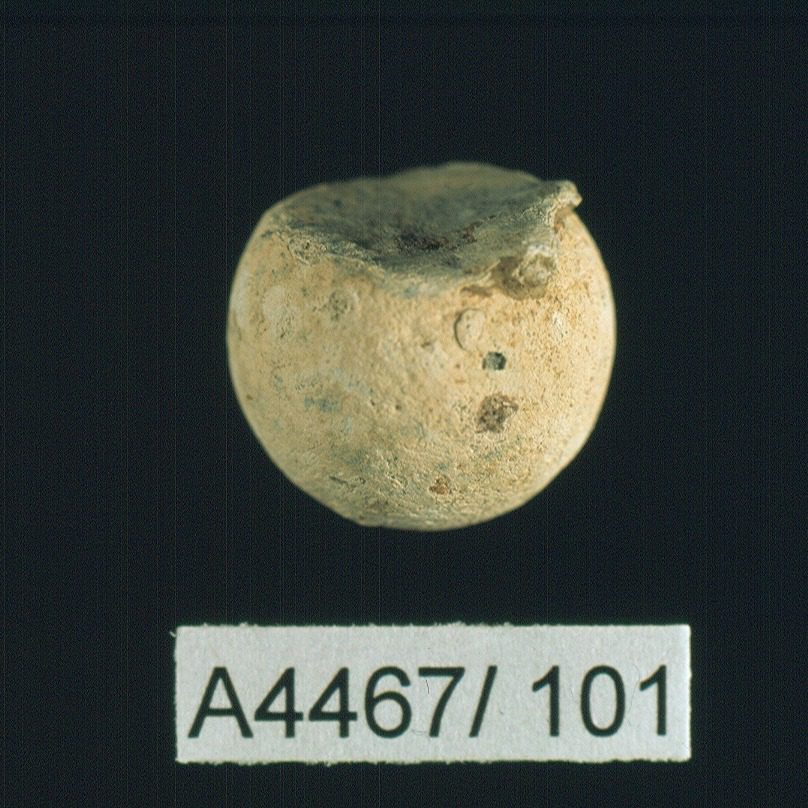
Musket ball with ricochet scar | Ohio History Connection
How often do you see a specific moment in time? This Revolutionary War period musket ball from Fort Laurens was found during Heidelberg University’s Center for Historic and Military Archaeology’s 1999-2000 research project. Check out the ricochet scar on the upper right side, it has the appearance of a cresting wave. Someone in the late 1770’s fired it and it hit something, but whether it was the intended target or not, we just don’t know.
This summer, you can have your own experience with artifacts at Fort Laurens, Ohio’s only Revolutionary War period fort! From mid-May to the end of September, Jon Brewster, Ohio History Connection’s Fort Laurens Archaeology Project Director, will begin the first phase of a three-year archaeological investigation. If you or someone in your family have ever wanted to “work on a dig”, now’s your chance!
Fort Laurens, had a short and tragic occupation between November 1778 and August 1779. For more information on it’s history, see our previous blog post.
According to Brewster, one facet of the first year’s excavation will be to “attempt to archaeologically document individuals that are currently invisible, or mostly invisible, in the existing literature; women, enslaved persons, and Native Americans. Even with the exact provenience now lost, these artifacts retain important data that can reveal information about the individuals that have remained largely invisible to the historical record. Women, usually wives of the soldiers, are only rarely mentioned in orderly books or letters, but were a critical component of 18th century armies, serving as laundresses, tailors, bakers, and nurses. Persons of African descent, free or enslaved, and Native Americans served the fledging American army in a variety of roles. Like the rest of society, these three groups likely carried personal items unique to their position in society.

Family screening for artifacts at Fort Laurens | Ohio History Connection
Whether lost or discarded, recovering these small items begins to document groups that have been largely relegated to faceless figures in the background.”
Another thing he hopes to discover is how the Fort’s palisade wall was constructed. Brewster elaborated, “The typical method was using soil taken from a borrow-ditch to reinforce the base of the palisade. The borrow ditch then became part of the fortifications, providing another obstacle to attackers and effectively raising the height of the wall for anyone at the base. This technique was modified at entry points to the fort by either filling in the borrow ditch, placing a bridge across the ditch, or designing the ditch excavation to avoid digging out the area directly in front of the gate.”
In addition to these two goals, he will also be reinstalling the Fort’s flag pole, the location of which was discovered during the 1971-1972 excavations by Dr. R. Michael Gramly.
Get Your Hands-on History
A big component of the three-year project will be public archaeology. People will have the opportunity to get their hands dirty and participate in a new chapter of archaeology at the site.
If you would like to help with the Fort Laurens Archaeology Project, or find out more about it, please contact Jon Brewster. Who knows? You may be the next person to find a Revolutionary War period musket ball !
Linda Pansing, Curator of Archaeology